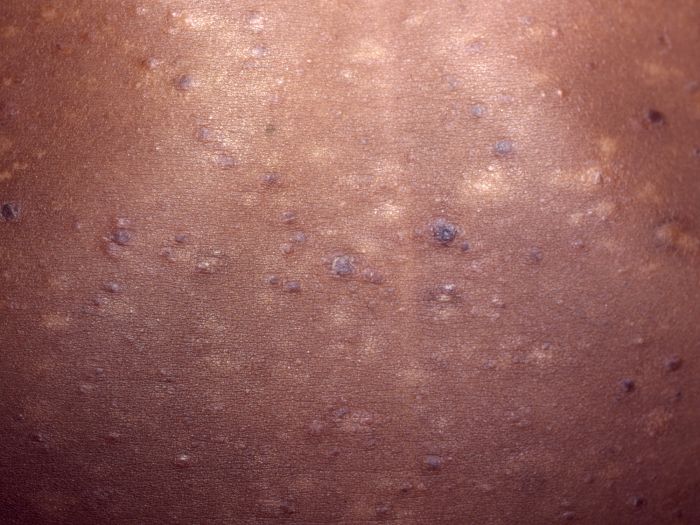Published on
Differential Diagnosis
- Scabies
- Pityriasis lichenoides et varioliformis acuta (PLEVA)
- Pityriasis rosea
- Varicella

Diagnosis
This patient was diagnosed with pityriasis lichenoides et varioliformis acuta (PLEVA), or Mucha-Habermann disease. This is a T-cell lymphoproliferative disorder characterized by acute onset of asymptomatic to mildly pruritic crops of red or brown, 2- to 3-mm macules, and papules that rapidly develop vesiculation and necrosis, sometimes becoming hemorrhagic. Ulcerated and crusted lesions are common. The crops usually recur over weeks to months before spontaneously resolving, often leaving varioliform scars. Biopsy shows CD8 lymphocytes.
Learnings/What to Look for
- PLEVA occurs most commonly occurs in male children and young adults, but can occur in both sexes, in all ages, and in all ethnicities
- Similar to pityriasis rosea, the rash is predominantly on the trunk, sometimes pruritic, and generally symmetric. However, PLEVA lesions are more red, brown, or hemorrhagic, which gives PLEVA its characteristic appearance. Generalized lymphadenopathy may be present
Pearls for Urgent Care Management
- PLEVA often resolves on its own within several weeks to several months
- Persistent cases may require treatment by a dermatologist, which could include oral antibiotics, topical or systemic steroids, immunomodulators, phototherapy, or sun exposure
Acknowledgment: Image and case presented by VisualDx (www.VisualDx.com/JUCM).
View Similar Cases
